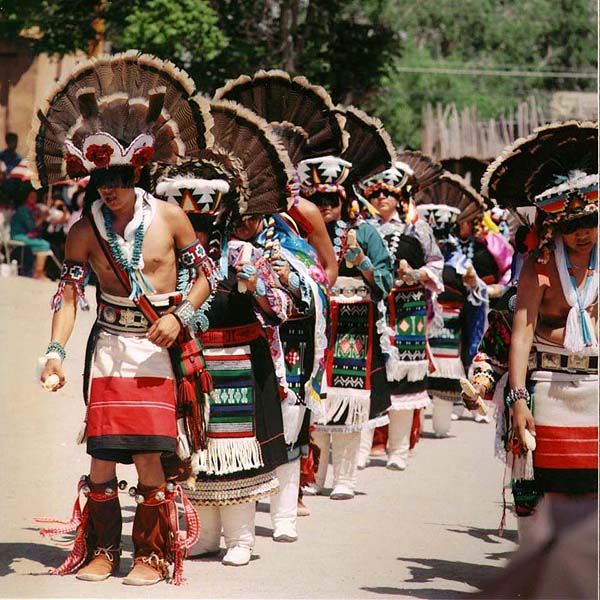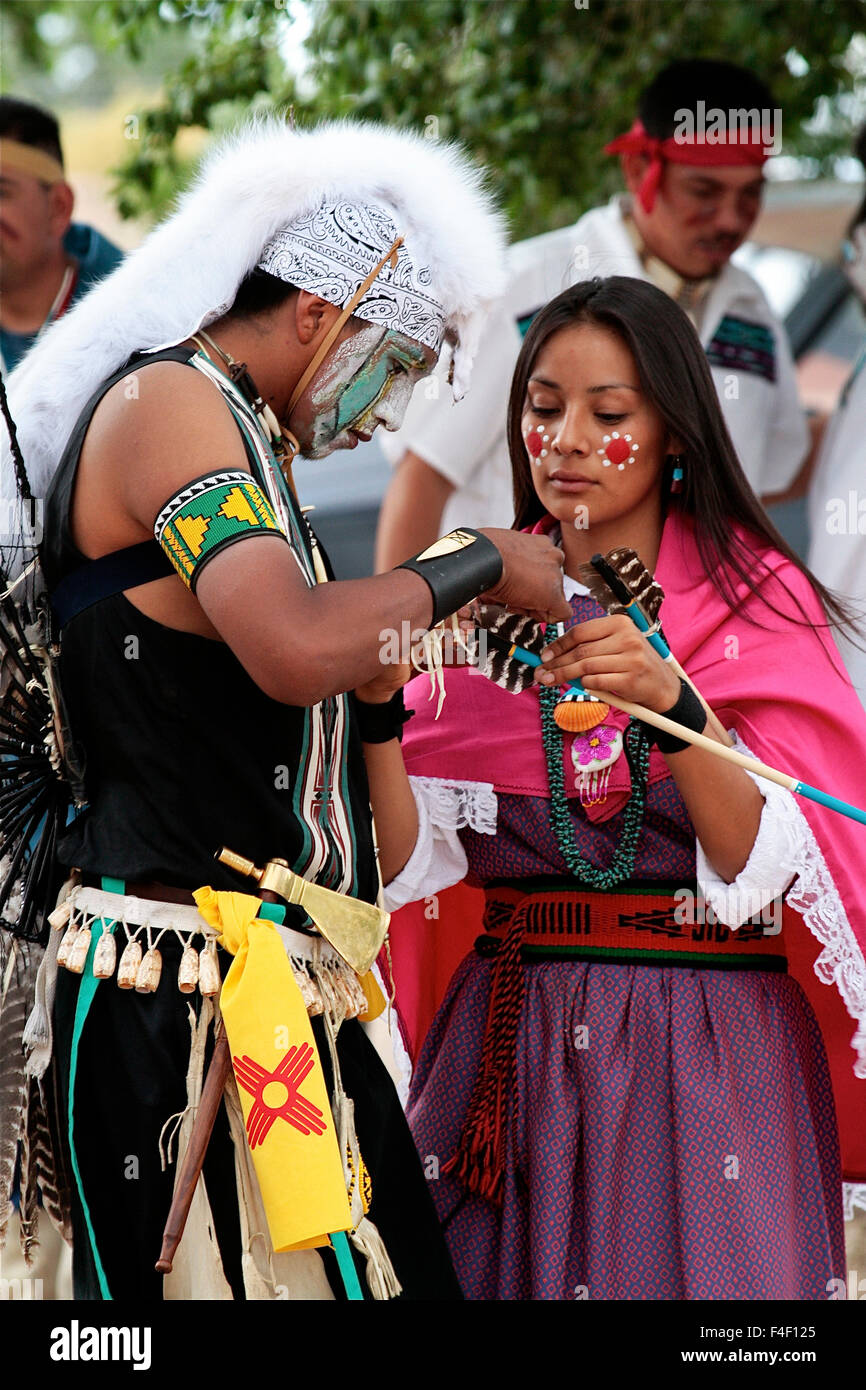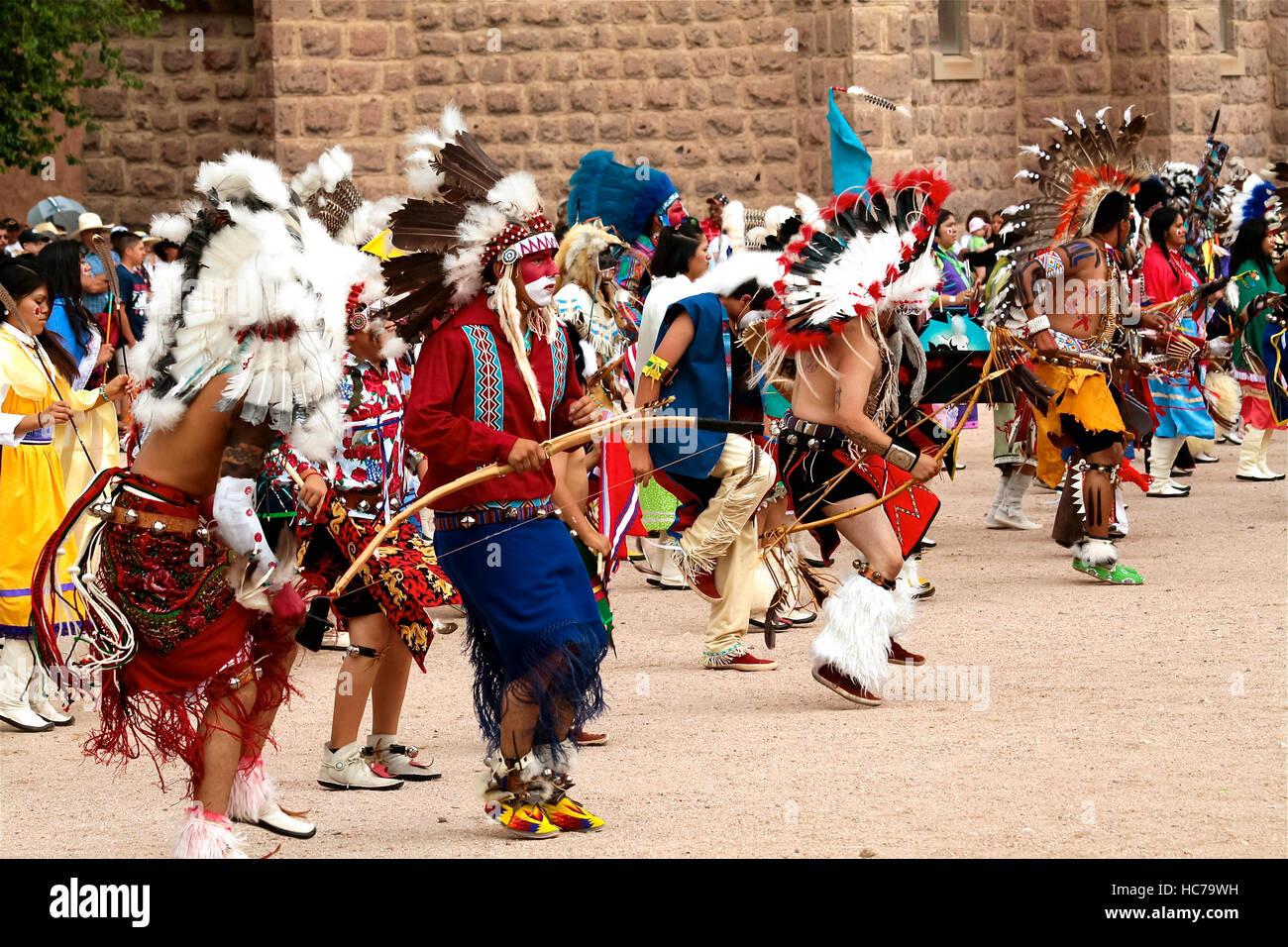
Ohkay Owingeh: A Tapestry of Resilience, History, and Enduring Culture in the Heart of New Mexico
OHKAY OWINGEH PUEBLO, NEW MEXICO – In the high desert of northern New Mexico, where the Sangre de Cristo Mountains cast long shadows over the fertile valley of the Rio Grande, lies a place of profound historical significance and vibrant cultural life: Ohkay Owingeh Pueblo. Once known as San Juan Pueblo, this community, continuously inhabited for millennia, reclaimed its ancestral name in 2005 – a powerful act of self-determination that echoed centuries of resilience. Ohkay Owingeh, meaning "Place of the Strong People" in the Tewa language, is not merely a name; it is a declaration, a testament to an enduring spirit forged in the crucible of history.
To understand Ohkay Owingeh is to delve into the very origins of Native American resistance in the Southwest and to witness the tenacious spirit of a people who have consistently navigated the currents of change while holding fast to their identity. It is a story told in the adobe walls of ancient homes, in the rhythmic beat of traditional drums, and in the quiet determination of its people to preserve their language, ceremonies, and way of life for generations to come.

The Crucible of History: From First Contact to Revolt
The ancestral lands of Ohkay Owingeh have been home to the Tewa people for at least 700 years, and their ancestors lived in the region for even longer. Situated at the confluence of the Rio Grande and the Rio Chama, the pueblo enjoyed a strategic location that provided abundant water for agriculture and rich resources. Their sophisticated irrigation systems, including the ancient acequias (communal irrigation ditches), predate European arrival and are still in use today, symbolizing their deep connection to the land and water.
The tranquility of their existence was irrevocably altered in 1598 when Don Juan de Oñate, leading a Spanish expedition, established the first European colonial capital in what would become the United States, just north of the pueblo. He named it San Juan de los Caballeros, and the nearby pueblo was subsequently referred to as San Juan Pueblo. The Spanish arrival brought dramatic changes: new diseases, forced labor, the imposition of Catholicism, and the suppression of traditional Pueblo spiritual practices.
Yet, from this period of intense oppression emerged one of the most significant acts of Native American resistance in North American history: the Pueblo Revolt of 1680. At the heart of this unified uprising was a man from Ohkay Owingeh, a powerful spiritual leader named Popé. Popé, after being imprisoned and flogged for practicing his native religion, galvanized the various Pueblo nations into an unprecedented alliance. He traveled secretly among the pueblos, urging them to shed Spanish rule and return to their ancient ways.
Interesting Fact: Popé famously used a knotted cord to signal the exact day of the coordinated revolt to all the pueblos. Each knot represented a day, and when the last knot was untied, the rebellion was to begin.
On August 10, 1680, Popé’s carefully orchestrated revolt exploded. In a stunning display of unity, the Pueblo people rose up, driving the Spanish colonists and missionaries completely out of New Mexico, a feat unparalleled in colonial North America. The Spanish would not successfully reconquer the territory for 12 years. Popé’s legacy at Ohkay Owingeh is not just one of rebellion, but of profound cultural reaffirmation, a fierce defense of sovereignty, and a testament to the power of collective action. His spirit, many believe, still resonates within the pueblo.
Reclaiming Identity: The Name Change
For centuries after the reconquest, the pueblo continued to be known as San Juan Pueblo, a colonial vestige that, for many, obscured their true identity. The movement to reclaim their ancestral name gathered momentum in the late 20th century. In 2005, after extensive community discussions and tribal council approval, the pueblo officially changed its name to Ohkay Owingeh.

"It was about taking back our identity, honoring our ancestors, and ensuring that our children grow up knowing who they truly are," explained a tribal elder, who preferred to remain anonymous, reflecting a common sentiment within the community. "San Juan was a name given to us; Ohkay Owingeh is who we have always been." This act was more than a symbolic gesture; it was a powerful assertion of cultural vitality and self-governance, inspiring other pueblos to consider similar steps.
Cultural Heartbeat: Language, Arts, and Ceremony
At the core of Ohkay Owingeh’s identity is the Tewa language, one of six Tanoan languages spoken by the Pueblo people. It is more than just a means of communication; it carries the weight of history, the nuances of spiritual beliefs, and the wisdom of generations. While English is widely spoken, concerted efforts are underway to revitalize Tewa among younger generations through language immersion programs and cultural education.
The artistic traditions of Ohkay Owingeh are equally vibrant. The pueblo is particularly known for its distinctive pottery, often made from local micaceous clay, which gives the finished pieces a beautiful, shimmery quality. These pots, bowls, and effigies are not merely decorative; they are functional, often used for cooking and ceremonial purposes, connecting daily life to ancient practices. Weaving, basketry, and traditional dances also play crucial roles in preserving cultural heritage.
The annual Feast Day of San Juan, celebrated on June 24th, remains a significant cultural event, even after the name change. It is a day of vibrant celebration, blending traditional Pueblo ceremonies with Catholic observances. Early morning church services are followed by traditional dances – often the Deer Dance or Buffalo Dance – performed in the pueblo plaza. The air fills with the rhythmic drumming, the chanting of the dancers, and the rich aroma of traditional foods like horno-baked bread, stews, and chile. It is a day when families gather, visitors are welcomed, and the enduring spirit of Ohkay Owingeh is put on full display.
Interesting Fact: The horno, an outdoor, beehive-shaped adobe oven, is a staple in Pueblo communities. Used for baking bread, roasting meats, and preparing other foods, it’s a direct descendant of ovens brought by the Spanish but has become an integral part of Pueblo culinary traditions.
Navigating the Modern World: Economy and Challenges
Like many Native American nations, Ohkay Owingeh walks a delicate path between preserving tradition and adapting to the demands of the modern world. Economic development is crucial for providing opportunities and services to its members. The Ohkay Owingeh Pueblo operates the Ohkay Casino Resort, a significant employer and revenue generator that supports tribal programs in healthcare, education, housing, and infrastructure. Other tribal enterprises include a hotel, a convention center, and various small businesses.
However, the pueblo faces common challenges shared by many tribal communities: high rates of poverty, limited access to advanced healthcare, the need for improved educational facilities, and the ongoing struggle to combat the loss of traditional language and cultural practices among youth. The younger generation, exposed to global influences, sometimes finds it challenging to balance the allure of modern society with the responsibilities of cultural preservation.
"Our biggest challenge is ensuring that our children understand the value of what we have here," says a community leader. "It’s not just about history; it’s about a living culture, a way of being that offers strength and identity in a rapidly changing world. We need to create pathways for them to engage, to learn, and to lead."
Sovereignty and Self-Determination: A Path Forward
Ohkay Owingeh is one of New Mexico’s 19 federally recognized pueblos, each a sovereign nation with its own government, laws, and cultural practices. This sovereignty, hard-won and continually defended, empowers the pueblo to make decisions that best serve its people. From managing water rights – a critical issue in the arid Southwest – to developing their own judicial systems and educational initiatives, self-governance is paramount.
The future of Ohkay Owingeh is being shaped by its people, who remain committed to the vision of their ancestors. Through cultural centers, language programs, and community events, they are actively nurturing the seeds of tradition. They are also advocating for their rights, building sustainable economic ventures, and investing in the health and well-being of their community.
Ohkay Owingeh Pueblo stands as a powerful symbol of resilience. It is a place where ancient traditions thrive alongside modern aspirations, where the echoes of Popé’s revolt still inspire, and where the "Strong People" continue to write their own story, rooted deeply in the land and looking confidently towards the future. It is a living testament to the enduring power of culture, identity, and the unwavering human spirit.


